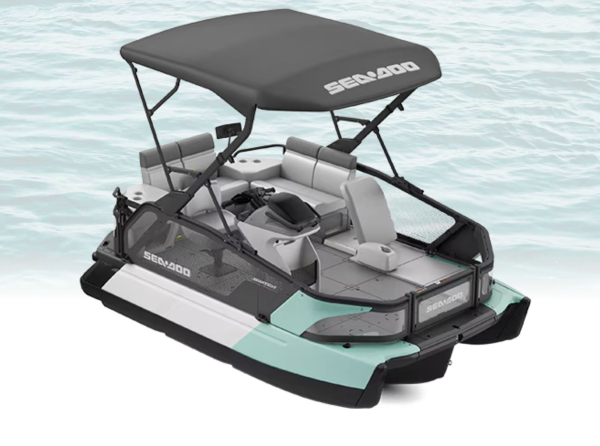
|
The U.S. Coast Guard has issued Safety Alert 18-25 warning owners of the Sea-Doo Switch about a serious capsizing hazard associated with the design of the jet-driven pontoon vessel. Introduced in 2022, the Switch features a central hull flanked by two outer pontoons for buoyancy and stability. However, several of these boats have capsized under conditions that appear unrelated to weather or operator error, resulting in multiple fatalities and severe injuries.
According to the alert, the problem arises from the boat’s hull design, which allows water to enter the center section while at rest. The water is intended to drain once the vessel is on plane, but until it does, the boat can sit bow-down in the water. When passenger weight is also concentrated forward, this trim by the bow creates instability. The Coast Guard warns that an abrupt change in speed or direction—particularly as the vessel slows toward idle—can generate enough force to cause the craft to capsize.
Bombardier Recreational Products (BRP), the manufacturer of the Sea-Doo Switch, initiated a safety recall in February 2025 titled “Front Overload – Risk of Capsizing.” The recall acknowledged that improper distribution of passengers and cargo could overload the bow, leading to nosediving, loss of stability, and possible capsizing. The recall fix involved applying sealant to sections of the hull, adding two new warning labels, and revising the operator’s manual. Despite these steps, a recent fatal incident occurred on a Switch that had been repaired according to BRP’s recall instructions, prompting the Coast Guard to review the adequacy of the corrective measures.
In its alert, the Coast Guard strongly urges Switch operators to take extra precautions to reduce the risk of capsizing. Operators should keep passenger and cargo weight toward the stern and avoid any operation that trims the bow down. They are advised to refrain from sudden speed or direction changes, particularly when not on plane, and to reduce throttle gradually if the bow begins to dip. When transitioning onto or off of plane, operators should remain aware that the boat may become unstable or prone to nosediving.
The Coast Guard also encourages operators to report any incidents or unsafe conditions to the Office of Auxiliary and Boating Safety, either through the Consumer Safety Defect Report portal on the USCG Boating website or via email to RBSCompliance@uscg.mil